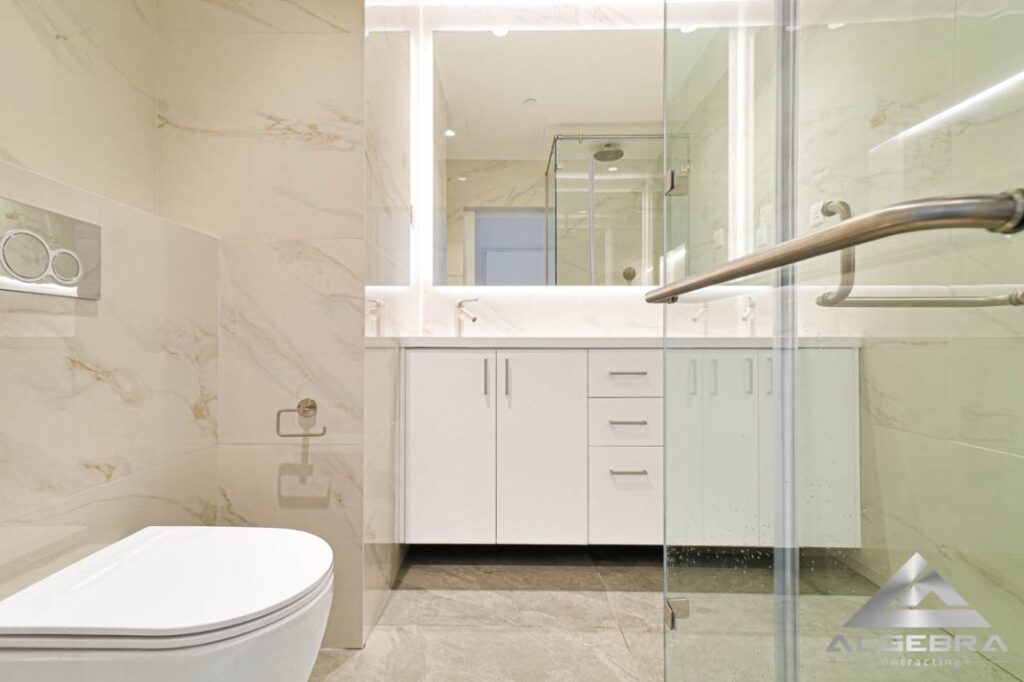
Leak Proof Your Bathroom: A Comprehensive Guide for Homeowners
Ensuring your bathroom is leak proof is not just about preventing water damage; it’s about maintaining a safe and efficient space. A leak proof bathroom not only protects against structural damage but also enhances the overall aesthetic and functionality of your home. In this guide, we will explore various strategies and tips to help you achieve a leak proof bathroom.

Understanding the Importance of Leak Proofing
Leak proofing your bathroom is essential for several reasons. Firstly, it prevents water damage that can lead to costly repairs. Water leaks can damage floors, walls, and ceilings, leading to mold growth and structural issues. Secondly, a leak proof bathroom is more efficient, reducing water waste and lowering utility bills. Lastly, it ensures a safe environment, preventing slips and falls due to water accumulation.
Common Causes of Bathroom Leaks
Before you can effectively leak proof your bathroom, it’s important to understand what causes leaks. Common sources include faulty plumbing, worn-out seals, and poor installation of fixtures. Identifying these issues early can prevent further damage and make the leak proofing process more efficient.
Steps to Leak Proof Your Bathroom
Inspect and Repair Plumbing
The first step in leak proofing your bathroom is to thoroughly inspect the plumbing. Look for any signs of leaks such as water stains or dampness. If you notice any issues, it’s crucial to repair them immediately. This may involve tightening connections, replacing worn-out pipes, or calling a professional plumber.
Seal Gaps and Cracks
Gaps and cracks in the walls, floors, or around fixtures can lead to leaks. Use waterproof sealant to fill these gaps and ensure no water can seep through. Regularly check these areas to maintain a leak proof bathroom.
Install Quality Fixtures
Investing in high-quality fixtures can prevent leaks and enhance the longevity of your bathroom. Look for fixtures with durable materials and reliable seals. Consider eco-friendly options to further improve the sustainability of your space. For more on sustainable bathroom design, check out this guide.
Waterproofing Techniques
Floor and Wall Waterproofing
Applying waterproof membranes to floors and walls is an effective way to leak proof your bathroom. These membranes act as a barrier, preventing any water from passing through. Ensure they are installed correctly and check them regularly for any signs of wear.
Shower and Bathtub Protection
Showers and bathtubs are major sources of leaks. Ensure they are properly sealed and maintain the caulking around the edges. Consider installing a shower pan liner to add an extra layer of protection.
Regular Maintenance Tips
Routine Inspections
Regular inspections are key to maintaining a leak proof bathroom. Check for any signs of moisture, loose tiles, or deteriorating seals. Address any issues immediately to prevent larger problems.
Cleaning and Upkeep
Keeping your bathroom clean can prevent mold and mildew, which can lead to leaks. Ensure that all surfaces are dry and free of any buildup. Regularly clean grout and tiles to maintain their integrity.
Eco-Friendly Considerations
Adopting eco-friendly practices can complement your leak proofing efforts. Consider installing water-saving fixtures and using sustainable materials. For more information, visit eco-home bathroom improvements.
Professional Help
If you’re unsure about any aspect of the leak proofing process, consider hiring a professional. They can provide expert advice and ensure that all measures are taken to secure your bathroom.
Conclusion
Ensuring your bathroom is leak proof involves a combination of regular maintenance, quality installations, and proactive measures. By taking these steps, you can protect your home, save money, and enjoy a safe, efficient bathroom.

FAQs
How often should I inspect my bathroom for leaks?
It’s recommended to inspect your bathroom for leaks every six months. Regular inspections can help identify potential issues before they become major problems.
What are the signs of a bathroom leak?
Common signs of a bathroom leak include water stains, dampness, mold growth, and an unexplained increase in water bills.
Can I leak proof my bathroom myself?
While many leak proofing measures can be done yourself, such as sealing gaps and inspecting plumbing, some tasks may require professional assistance. If you’re unsure, it’s best to consult a professional.
This article contains affiliate links. We may earn a commission at no extra cost to you.